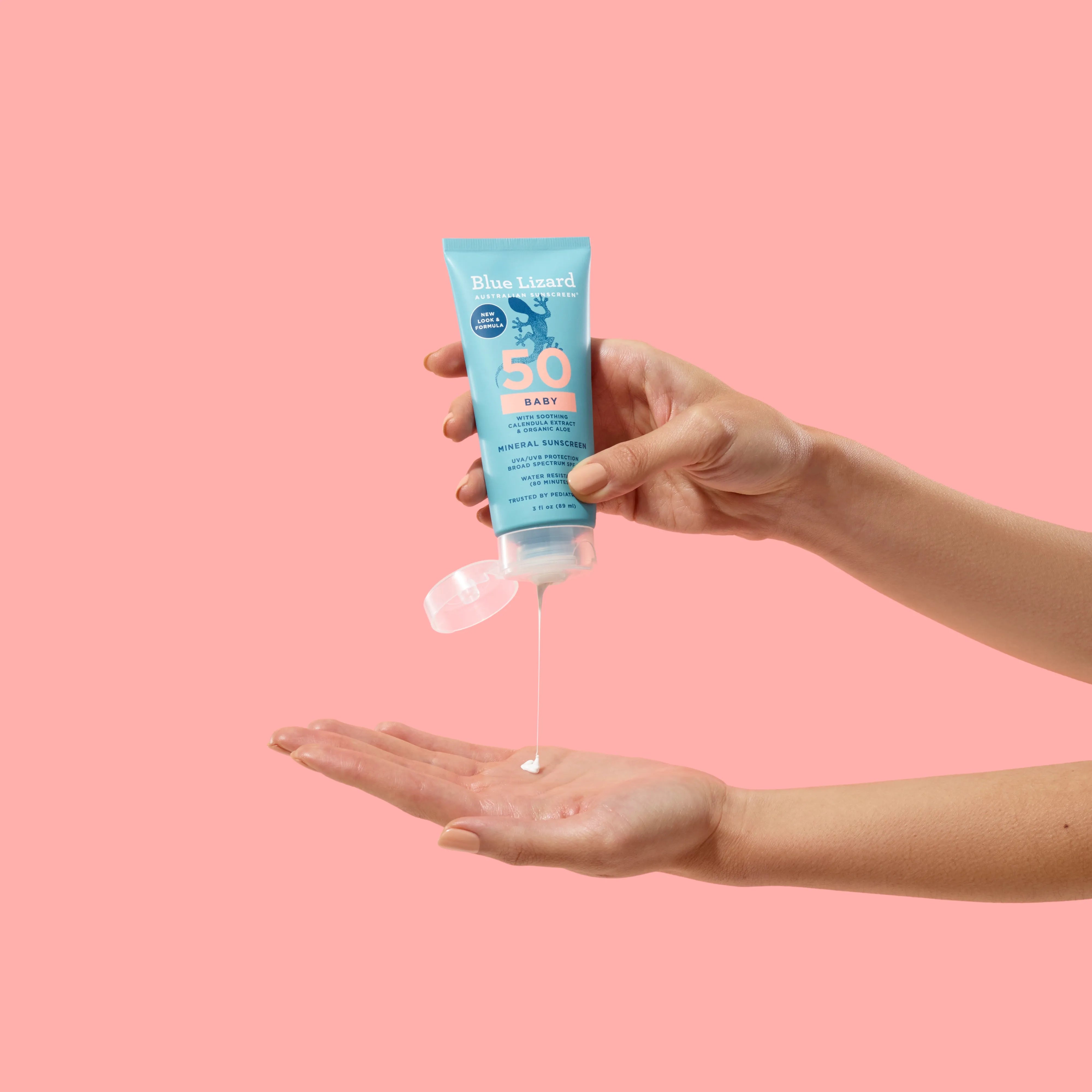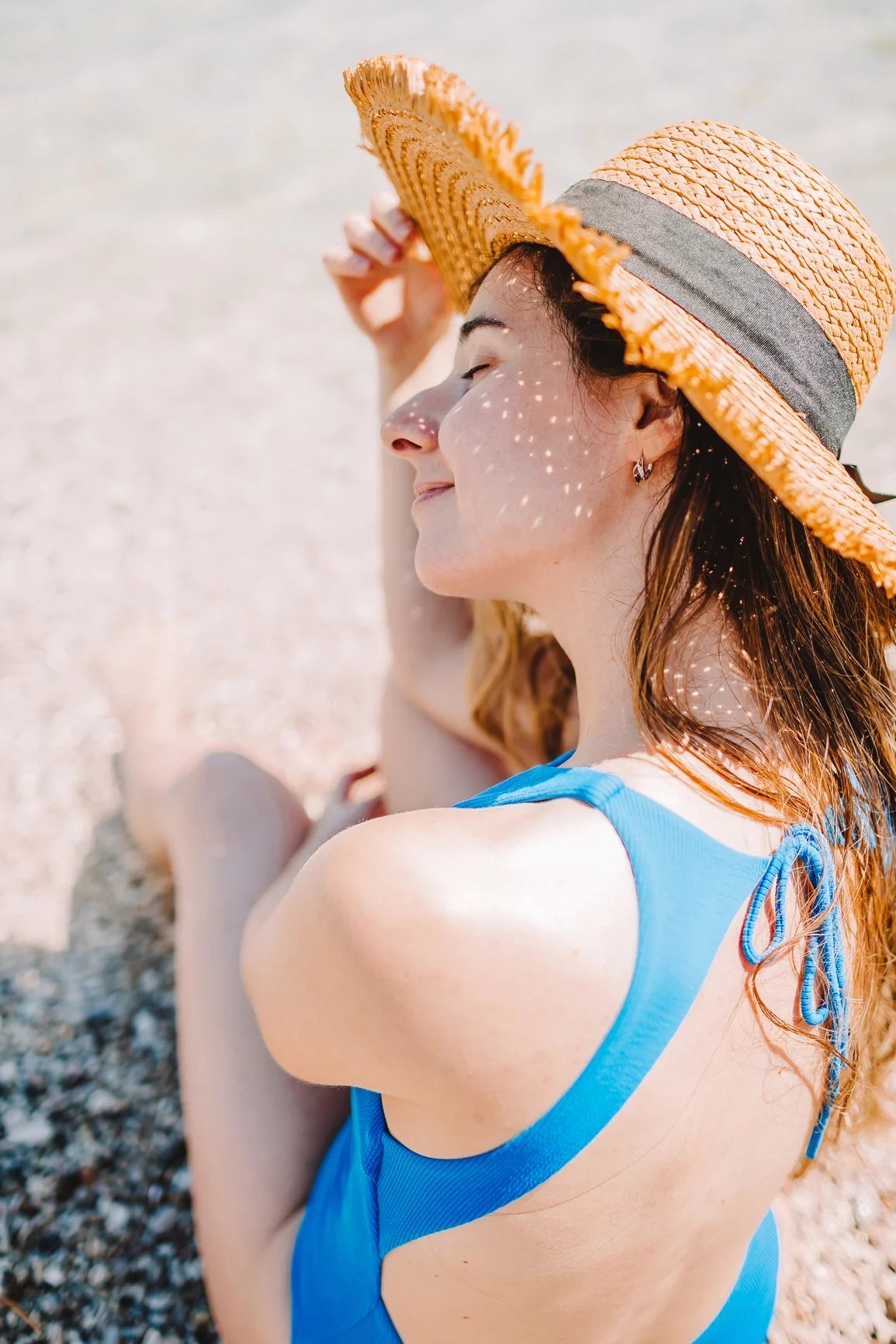The sun is a wonderful thing that’s responsible for all life on planet earth and getting out and enjoying it during the Summer is something we all take for granted. However, with just 30% of women and an even more paltry 14% of men in America regularly wearing sunscreen on exposed skin, sunburn protection levels are clearly not where they should be.
Melanoma is known to be caused by sunburn and the risk of developing it at some point in your life increases greatly when you get sunburnt just once as a child. Adequate protection against the sun doesn’t have to be expensive or complicated, with just a few simple measures able to keep your skin safe and healthy.
With this in mind, we offer up 10 sun safety tips to help ensure that you get the protection you need to safeguard yourself and your family. So, why not pull up a sun lounger, pour yourself a cold glass of lemonade and relax as we tell you how to enjoy the weather without damaging your skin.
Tip #1 - Use Sunscreen Every day, Even When It’s Cloudy
Ok, so we start with something that surprisingly few people actually know about, and it relates to cloud cover. If you go out during the day when it’s cloudy, you could be forgiven for thinking that there would be no need to wear sunscreen at all. The reality is very different, as an overcast day does not equate to zero sun damage for your skin.
In truth, the clouds only stop UVB rays from reaching the earth’s surface, but for UVA rays, that’s a different matter entirely, as they’re all around us each and every day. UVB rays are known to be responsible for sunburn. UVA rays and are able to penetrate more deeply, resulting in ageing of the skin.
Tip #2 - Use At Least One Ounce of Sun Lotion
Our next tip for sun safety relates to how much chemical or mineral sunscreen you should use. We’d always recommend using a mineral-based sunscreen that includes Zinc Oxide, but in either sense, you should aim to be using at least the amount it would take to fill a shot glass. Most adults need about one ounce—or a full shot glass—of sunscreen to fully cover their body, but you may need more or less depending on your body type.
Always apply any kind of sunscreen at least 15 minutes before going outside or being exposed to the sun. Apply sunscreen to all areas that won’t be covered with clothing, including your neck, ears, face, the tops of your feet and legs.
Tip #3 - Always Go for a Broad-Spectrum Sunscreen
We briefly mentioned UVA rays in tip #1 – you should always opt for a sunscreen that offers broad spectrum protection. If you don’t, then you’re only getting UVB protection, and you leave your skin completely exposed to the ageing damage that UVA rays cause.
It’s a good idea to go for a product that offers water resistance too if you’re heading to the beach, as non-water-resistant varieties can wash off too easily and leave you unprotected.
Tip #4 - Remember to Reapply for Effective Sunburn Protection
Something else that you should be mindful of when out in the sun for an extended period is the need to reapply sunscreen. Sunscreen should be reapplied at least every two hours. If you’re swimming or sweating, you’ll need to apply more often, so check the reapplication directions on the back label to learn more.
Reapplication of sunscreen is something that many people forget, with studies showing that as many as ⅔ of adults in the US only apply it once during a day out in the sun.
Tip #5 - Keep Babies Under 6 Months of Age in the Shade
Keeping your kids safe in the sun is important, but if your child is under 6 months old, it’s recommended to keep them out of the sun entirely. You should also be looking to keep them covered with light clothing even when in the shade, as they have such delicate skin at that age that the sunburn protection that sunscreen provides still isn’t enough.
The reason for this is that at this age, their baby soft skin just doesn’t contain enough melanin to provide any sort of protection against direct sunlight.
Tip #6 - Take Extra Care Around Sand & Water
When you’re out in the sun, the threat of skin damage doesn’t only come from above, as rays can be reflected up from the ground as well. This is particularly true when you’re near water or sitting on sandy beaches, as these surfaces reflect quite a lot of sunshine back up at us, increasing our chances of becoming burnt in areas that many of us don’t think of.
Tip #7 - Try & Avoid the Midday Sun
The next of our sun safety tips is to tell you about staying out of the sun during the hours at which it’s strongest. Between 10 am and 4 pm each day, the sun’s rays are at their most intense, so if you can avoid going out during those hours, you’ll minimize the chance of being sunburnt.
During this 6 hour spell each day, you’ll feel more heat and brightness coming at you from the sun, greatly reducing the amount of time you can safely spend in it. There’s a good rule of thumb to use in this instance, which states that if the shadow you cast is shorter than you are, then you should get yourself back into the shade.
Tip #8 - Use Clothes to Protect Your Skin
Clothes can also be useful when it comes to sun safety, as tightly-woven fabrics and dark clothing are able to block most of the sun’s rays. The lighter the clothing, the lower the protection that it will offer, with white T shirts offering almost no protection at all.
If you want to take clothing protection to another level, there are a number of clothing products on the market that have sun protection designed into them. This is not strictly necessary, though, as choosing dark garments that cover all of your exposed skin will usually suffice.
Tip #9 - Don’t Forget Your Sun Hat & Glasses!
Another highly effective type of sunburn protection comes in the form of wearing wide-brimmed sun hats and UV protective sunglasses. Hats provide ample protection for your face, ears, and neck and when combined with UV sunglasses, you also get protection for your eyes and the skin around your eye area.
This is a solution that is often forgotten by people, but it’s one of the easiest to implement. Wearing a hat and sunglasses can literally mean the difference between an enjoyable day out and a bad case of sunburn and days of discomfort afterwards.
Tip #10 - Be Even More Careful When Taking Medications
Believe it or not, there are medications and topical treatments out there that can make you more sensitive to sunlight. When taking medication like anti-inflammatories, blood pressure pills and antibiotics or when using some topical acne treatments, you can become more susceptible to the sun’s rays, meaning that you should take even more care with your sunburn protection.
This might mean wearing more sunscreen than you normally would or staying indoors more often to combat the issue. Of course, you should also be sure to employ the safety tips we’ve offered here to minimize any skin damage during this period.
Staying Happy & Safe in the Sun This Summer
So, there you have it, 10 handy sun safety tips for staying safe in the sun this Summer. As you can see, most of the tips we’ve offered are cost-free and just involve a slight change to how you’re doing things. In this case, these small things can make a very big difference and allow you to safely enjoy more of the sun that you would otherwise be able to.
At Blue Lizard Sunscreen, we offer high quality mineral sunscreen that’s created from naturally occurring elements like zinc oxide and titanium oxide that do no such damage. We also offer products that are non-comedogenic and perfect for sensitive skin, as we think everyone has the right to enjoy the sunshine.








